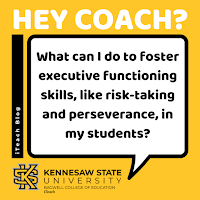Creating Cross-Curricular Learning Opportunities While Personalizing Learning
Studying Space and Space flight incorporates the study of several disciplines: math, science, geography. Within these disciplines there are multiple subjects that can be studied to gain insight into the space program:
- measurement
- planets

- maps
- weather
- speed and distance
- exercise needs
- human body
- environment
- nutrition...the list goes on.
With the many choices within this unit of study, personalizing learning (PL) becomes an easy fit.
In schools that have already chosen one or more Personalized Learning (PL) Principles to focus on, teachers can easily pick one or two to hone in on as they prepare the unit. PL Principles are rarely demonstrated in isolation. Instead the principles are interconnected and overlapping. If Choice and Voice is a principle area of focus, the options for students to demonstrate their understanding include choice boards, choosing challenging projects based on the student’s interests and ability level, classroom presentations to either their peers or to parents and peers and reflection activities; however, choosing a project based on interest and ability and reflection could also come under Just-In-Time Direct Instruction, while reflection activities and presentations could fall under Demonstrating Mastery or Co-planning Their Own Learning. To this end, teachers should make many choices available to students as the teachers work together to create a meaningful plan of instruction.
With so many of the subjects within the study of space, cross-curricular planning within the school makes sense.
Grade levels or departments plan a unit based on the standards being studied in their classes.
With completed plans, teachers begin to meet with other grade level or department teachers.
During these meetings they plan activities that will personalize learning for their students using one or two of the principles.
Implement lesson and maintain notes of keepers and changers within the lesson.
Choice Boards (link to examples, or search Pinterest for hundreds of choice board examples) could be created that incorporate standards from a variety of subjects, yet still allow for students to be involved in their learning at a level best suited for them. These choice boards could be used school-wide, demonstrating to students that mastery of a concept or subject shouldn’t be learned in isolation and that real world skills can be applied no matter which subject class is studying the unit.

Personalizing Learning requires time on the front end, creating these lessons and options. Dedicated planning time is necessary for teachers to be able to adequately create exceptional lessons for their students and part of the dedicated planning time should include time to collaborate with colleagues. Since time or lack thereof is always a factor in teacher cooperative planning, finding alternative ways to meet might be one way of making this process less stressful. Try Google Hangouts, sharing a Google or Word document, or Skype to name a few. It is important that teachers experience personalizing instruction in ways similar to students experiencing personalized learning. In this way, the teachers will have opportunities to tweak lessons so that they provide the right focus for all learners. Teachers will also be able to gauge time, technology and space needs so that students can complete their assignments with as little frustration and hiccups as possible.
Because a number of companies today are moving to work-from-home environments, learning how to manage time and set priorities when completing an assignment become even more valuable. Students who see that learning and work are not isolated to themselves or one subject will become more marketable employees in the ever changing work landscape.

Suzanne Petersen
Instructional Technology Specialist
Kennesaw State University iTeach
@suzysunshine16
Instructional Technology Specialist
Kennesaw State University iTeach
@suzysunshine16



Comments
Post a Comment